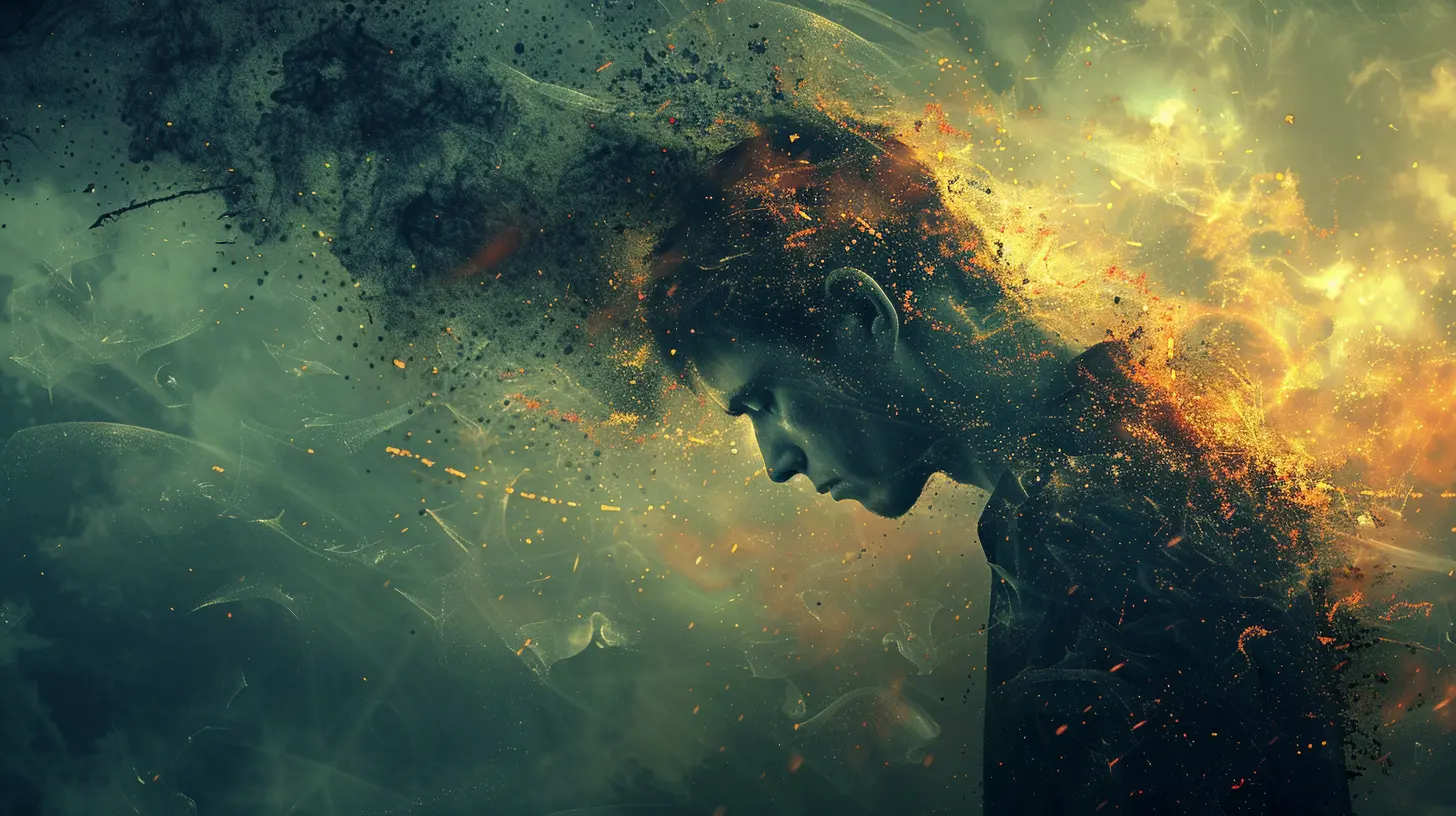The Connection Between Bipolar Disorder and Trauma
23 October 2025
When we think about bipolar disorder, what usually comes to mind is a rollercoaster of emotional highs and lows. But what often gets overlooked is the hidden link between bipolar disorder and trauma. Yep, trauma. That messy, painful, often unspoken side of life can play a pretty big role in the development—and even the progression—of bipolar disorder.
If you've ever wondered why someone with a history of trauma seems to battle more intense mood swings or why certain emotional triggers can feel like lighting a fuse, you're not alone. This connection isn't just something people talk about—it’s backed by science, research, and, more importantly, real-life stories.
So, let’s dive deep into the connection between bipolar disorder and trauma. We’re going to break it down in simple, straightforward language. No confusing jargon, just an honest conversation.
What Is Bipolar Disorder?
Before we link trauma into this, let’s quickly go over what bipolar disorder actually is. Bipolar disorder is a mental health condition that causes marked shifts in mood, energy, activity levels, and the ability to carry out day-to-day tasks.Most people experience periods of:
- Mania or Hypomania: Feeling overly energetic, euphoric, irritable, or on top of the world. Think of it as your brain pressing the gas pedal with no brakes.
- Depression: Feeling extremely sad, hopeless, tired, or losing interest in things you once loved. Kind of like wading through quicksand with no way out.
There are different types—Bipolar I, Bipolar II, Cyclothymic Disorder—but all of them mess around with your emotions and thinking patterns in serious ways.
But here’s the deal: While bipolar disorder is often described as a chemical imbalance or genetic trait, there’s growing evidence that trauma might play a significant role too.
Understanding Trauma: More Than Just a Buzzword
When we hear the word “trauma,” we often think of big, obvious events—like abuse, assault, war, or accidents. And yes, those are definitely traumatic. But trauma isn’t always loud and dramatic.Trauma can also be:
- Growing up in an emotionally neglectful household
- Being constantly criticized
- Losing a loved one
- Living through a painful breakup
- Experiencing racism, bullying, or any form of prolonged stress
In simple terms, trauma is your brain’s reaction to something it perceives as deeply distressing or disturbing. And the tricky part is—what’s traumatic for one person might not be for another. Everyone's emotional threshold is different.
So, What’s the Link Between Bipolar Disorder and Trauma?
Now, here’s where things start to get really interesting.1. Trauma Can Be a Trigger
Trauma doesn’t cause bipolar disorder directly, but it can wake it up—especially if someone already has a genetic predisposition. Think of bipolar disorder as a dormant volcano. The genetic fault lines are already there. Then along comes trauma, like an earthquake, and boom—an eruption.Studies have shown that people with bipolar disorder are more likely to have experienced traumatic events in childhood or adulthood. The trauma doesn’t always come before the onset of symptoms, but it often plays a role in when and how those symptoms show up.
2. Trauma Makes Symptoms Worse
If someone already has bipolar disorder, trauma can make everything more intense. It can:- Trigger more frequent mood episodes
- Make manic or depressive periods last longer
- Increase the risk of impulsive or high-risk behaviors
- Lead to a more complicated diagnosis with comorbid disorders like PTSD or anxiety
Basically, trauma throws fuel on an already burning fire.
3. The Trauma-Bipolar Cycle
Here’s where it can feel like a never-ending loop.- Trauma increases emotional sensitivity.
- Emotional sensitivity makes mood swings more intense.
- These mood swings can lead to more distress and, in turn, more trauma—especially if the person is acting impulsively during manic episodes or isolating during depressive ones.
It’s a vicious cycle, and without the right kind of support, it can feel pretty hopeless. But we’ll talk about the good news in a bit—promise.
Childhood Trauma and Bipolar Disorder
One of the most researched areas in this topic is the effect of early trauma, especially childhood trauma.Picture a child growing up in a chaotic environment—maybe there’s abuse, neglect, or intense emotional instability. Over time, their brain adapts to survive. It learns to be constantly on alert, overly sensitive to danger, and struggles to regulate emotions.
These adaptations can lay the groundwork for mood instability later in life. Several studies show that adults with bipolar disorder are more likely to report:
- Physical or emotional abuse in childhood
- Sexual abuse
- Loss of a parent or close caregiver
- Chronic neglect
The brain is still developing during childhood, so trauma during this time can have long-lasting effects on how emotional regulation systems form. It’s like trying to build a house on shaky ground—it’s always going to feel unstable.
Emotional Dysregulation: A Shared Pathway
Another connection point between bipolar disorder and trauma is emotional dysregulation. That’s just a fancy way of saying, "finding it really hard to manage emotions."Both trauma survivors and people with bipolar disorder often find themselves:
- Overwhelmed by small emotional triggers
- Reacting intensely to stress
- Swinging between emotional highs and lows
- Feeling numb or detached at times
The overlap is striking, and it’s one reason why bipolar disorder is sometimes misdiagnosed as borderline personality disorder (BPD), especially in those with trauma histories. But with thorough assessments, mental health professionals can usually tease apart the differences.
PTSD and Bipolar Disorder: Double Trouble
Let’s talk about PTSD (Post-Traumatic Stress Disorder) for a second here. If someone has experienced trauma, especially if it was severe or repetitive, they might develop PTSD. And guess what? People with bipolar disorder are at higher risk for PTSD too.Having both conditions can make treatment more complicated. For example, someone in a manic episode might have flashbacks, intense anxiety, or nightmares. Meanwhile, someone recovering from trauma may find their emotional lows even lower due to bipolar depression.
The symptoms can overlap and feed off each other, making it harder for doctors to spot what’s going on. But with the right care, both can be managed effectively.
Healing from Trauma While Managing Bipolar Disorder
Okay, so this all might sound super intense. But here comes the good news: Healing is absolutely possible. You can manage both trauma and bipolar disorder. Thousands of people do, every day.1. Therapy Works. Seriously.
Therapy isn’t just for venting—it’s about building skills and creating change. Some of the most effective kinds of therapy for this combo include:- Cognitive Behavioral Therapy (CBT): Helps you reframe unhelpful thoughts and develop coping strategies.
- Dialectical Behavior Therapy (DBT): Great for emotional regulation and distress tolerance.
- Trauma-Focused Therapies: Like EMDR (Eye Movement Desensitization and Reprocessing) or prolonged exposure therapy.
A therapist experienced with both bipolar disorder and trauma is key. They can help you unravel the tangled web of symptoms without pushing too hard or dismissing your emotional struggles.
2. Medication Helps Stabilize the Ride
For many people with bipolar disorder, medication is a game-changer. It can balance mood swings and make it easier to process trauma in therapy without being overwhelmed.Common medications include:
- Mood stabilizers (like lithium)
- Antipsychotics
- Antidepressants (used carefully due to possible mania trigger)
Always work with a psychiatrist who understands trauma history so your treatment is holistic and tailored.
3. Build a Support Network
You don’t have to go it alone. Having people who understand—whether it’s friends, family, or support groups—can make all the difference. Sometimes just knowing someone else gets it is enough to keep you going on tough days.Let’s Talk Self-Care (It’s Not Just Bubble Baths)
Healing from trauma and managing bipolar disorder both demand solid self-care. Not the fluffy kind we see on Instagram, but the real stuff:- Getting enough sleep
- Eating well
- Moving your body regularly
- Avoiding alcohol or drugs that stir up symptoms
- Journaling or expressing emotions creatively
- Saying no when you need to
Think of self-care as watering your emotional garden; without it, nothing positive can really grow.
Final Thoughts: You Are Not Broken
If you’ve lived through trauma and now find yourself dealing with bipolar disorder, hear this loud and clear: You are not broken. You’re not weak. And you’re definitely not alone.Your brain has been through a lot, and it’s doing its best to protect you—even if it doesn’t always get it right. Understanding how trauma and bipolar disorder connect can help you make sense of your story and guide you toward healing.
Life with bipolar disorder and trauma isn’t easy, but it is manageable. With the right support system, treatment plan, and self-awareness, you can lead a fulfilling, stable, meaningful life.
all images in this post were generated using AI tools
Category:
Bipolar DisorderAuthor:

Jenna Richardson
Discussion
rate this article
1 comments
Jade McCray
Insightful article! Thank you for shedding light on this connection.
October 23, 2025 at 2:34 PM

Jenna Richardson
Thank you for your kind words! I'm glad you found the article insightful.


